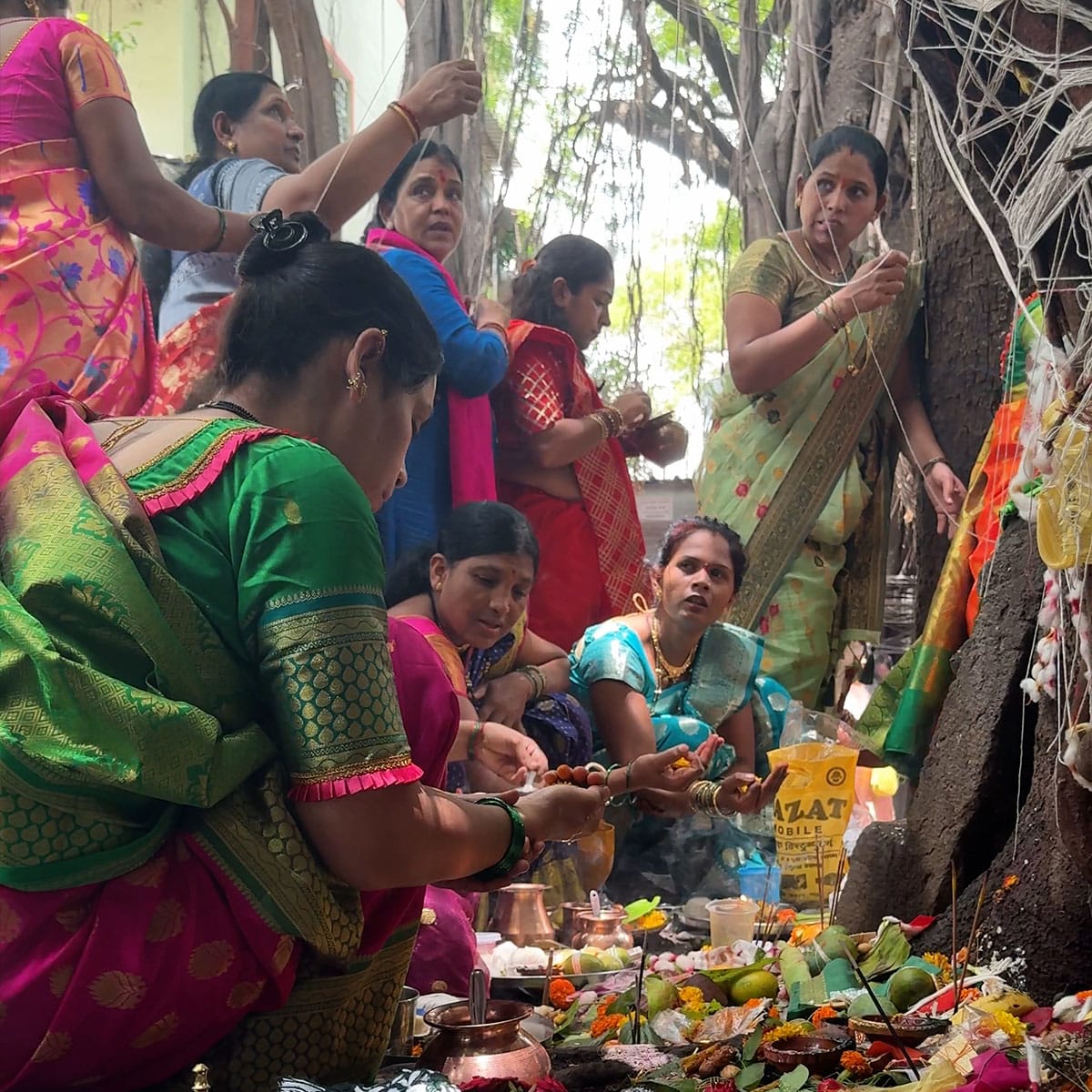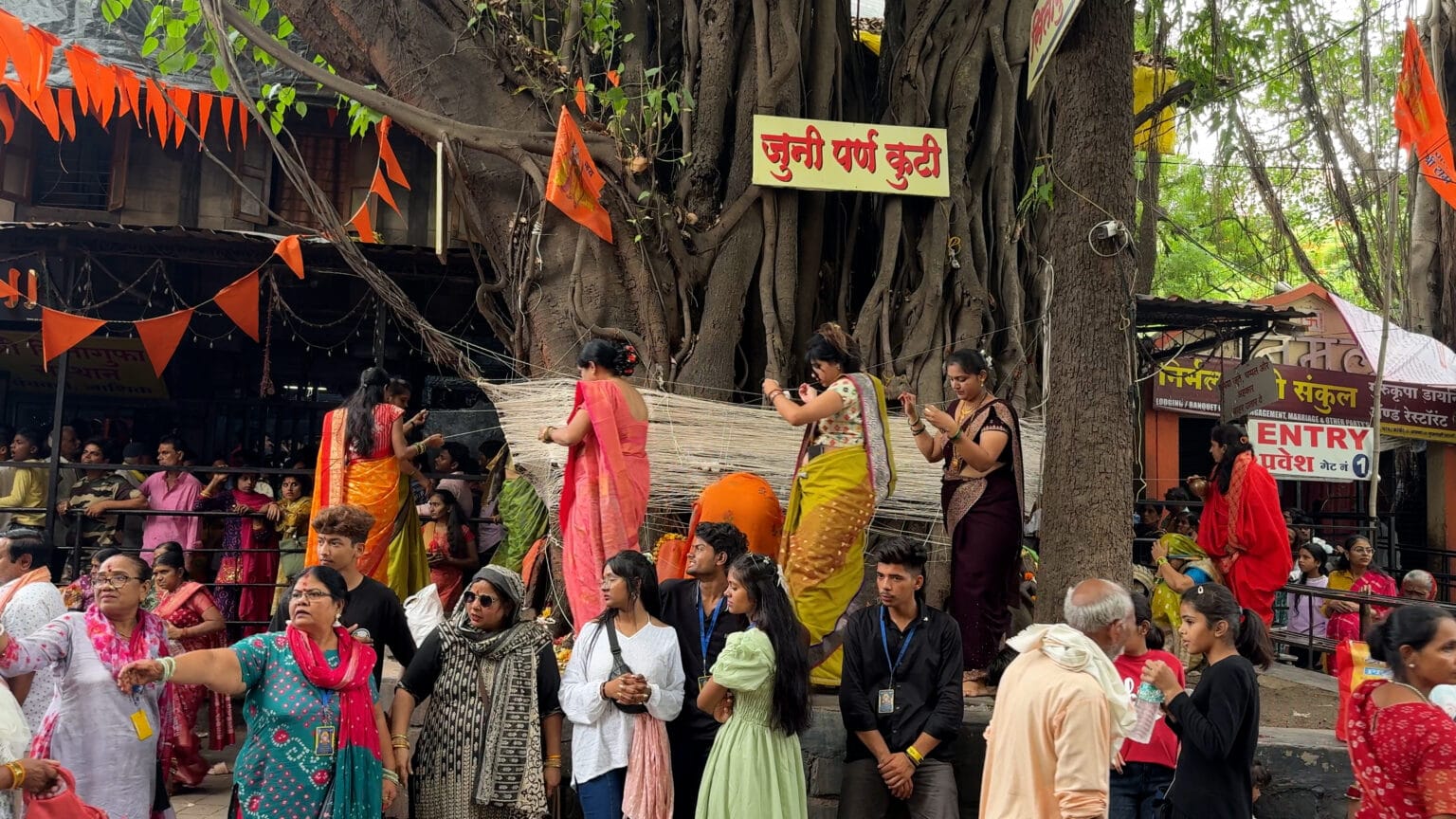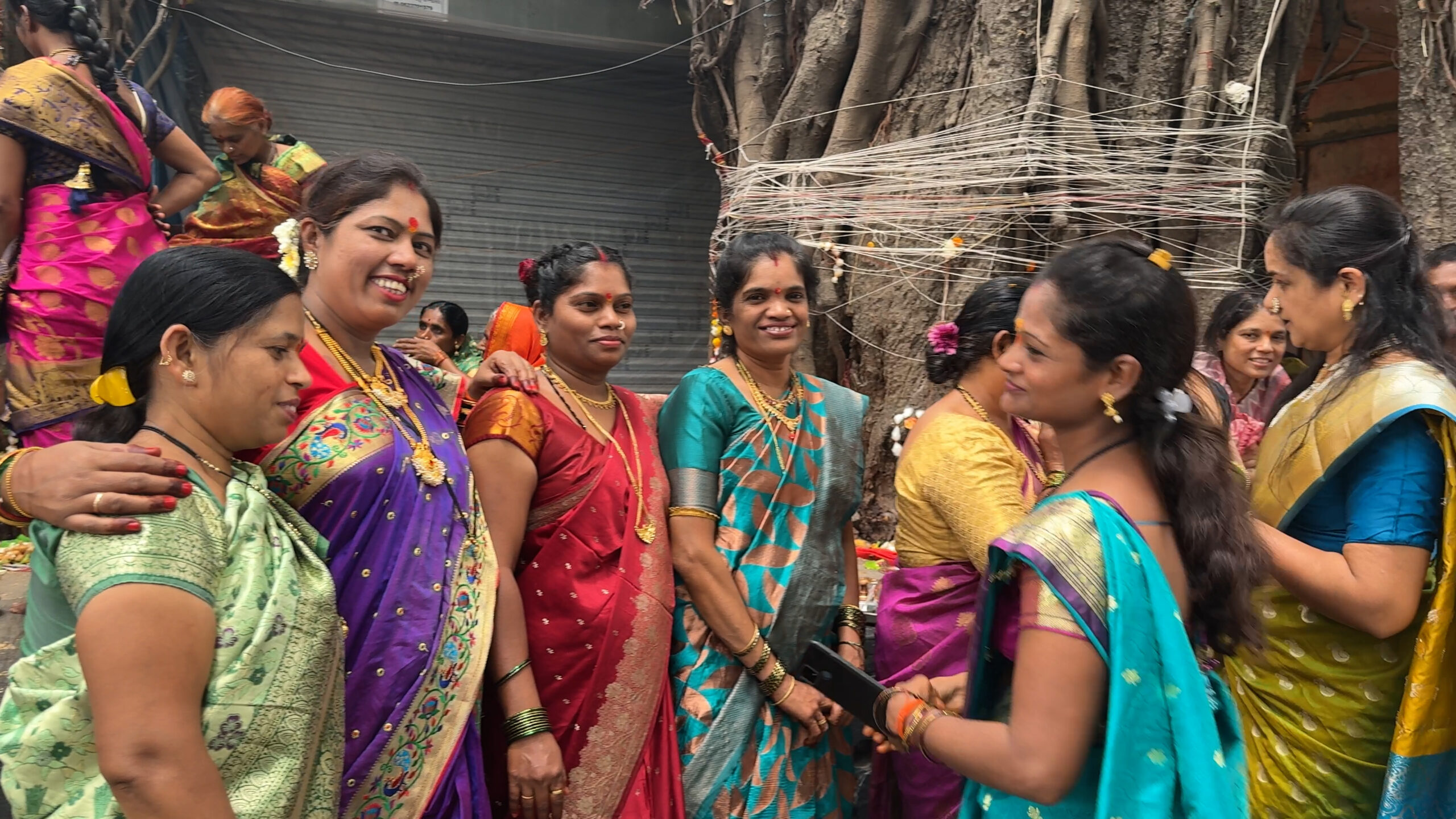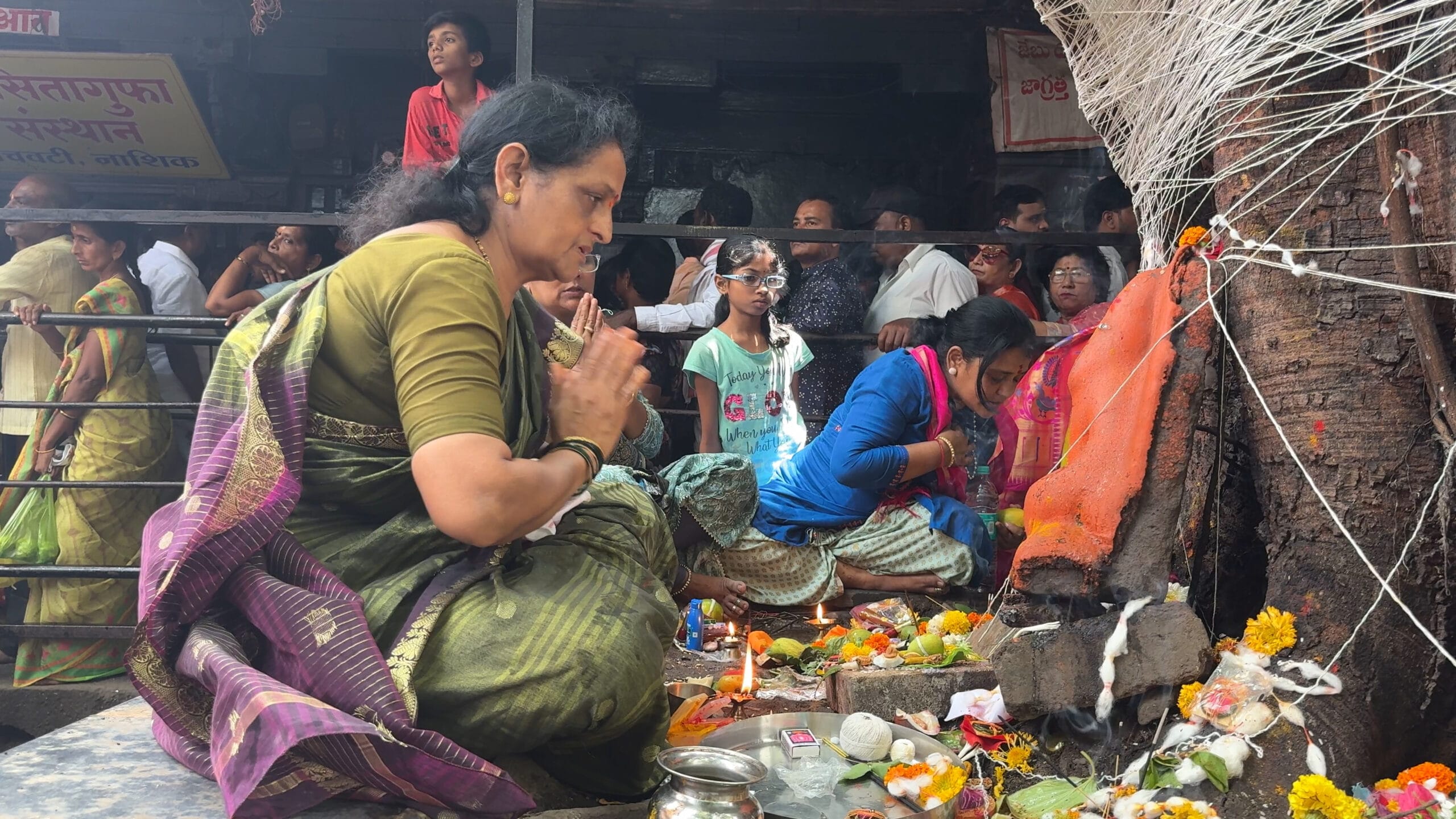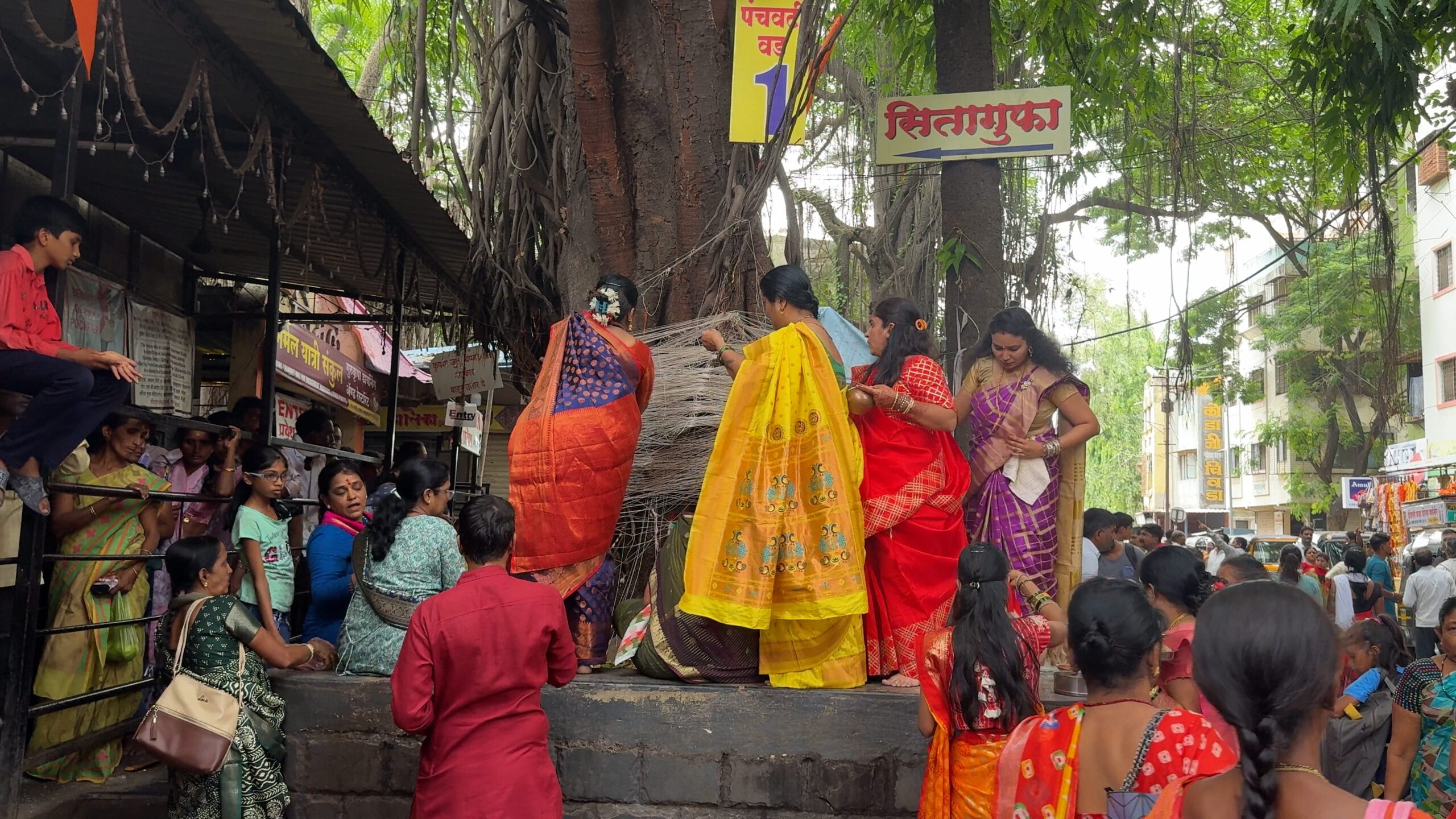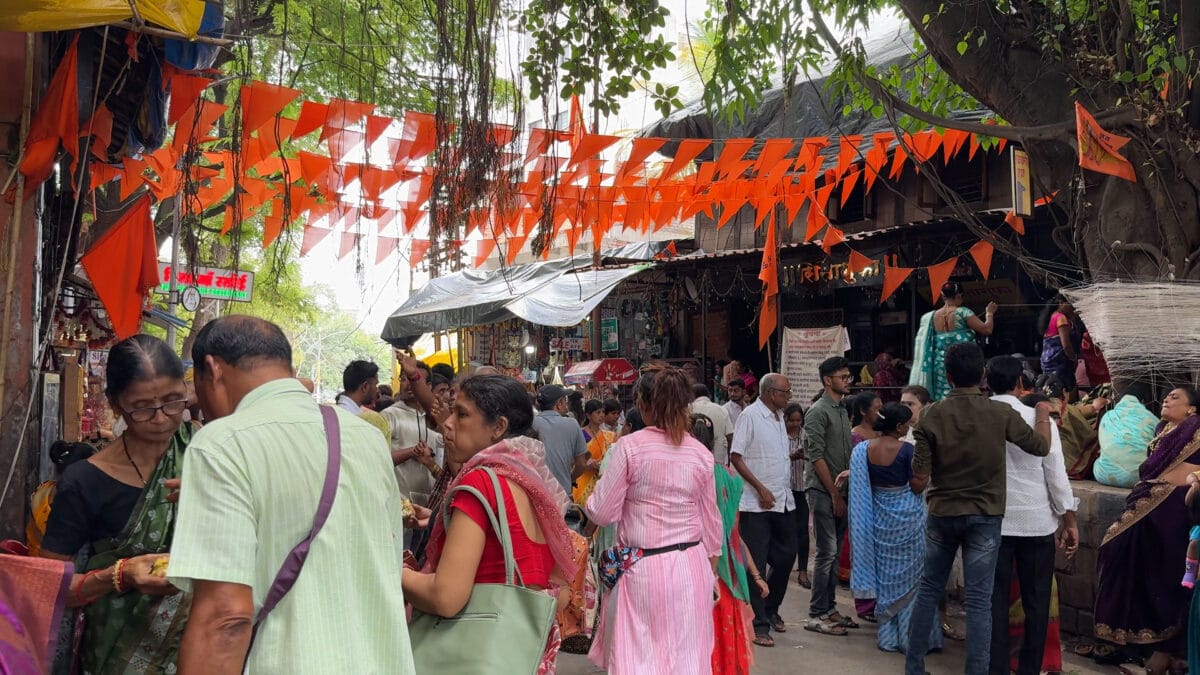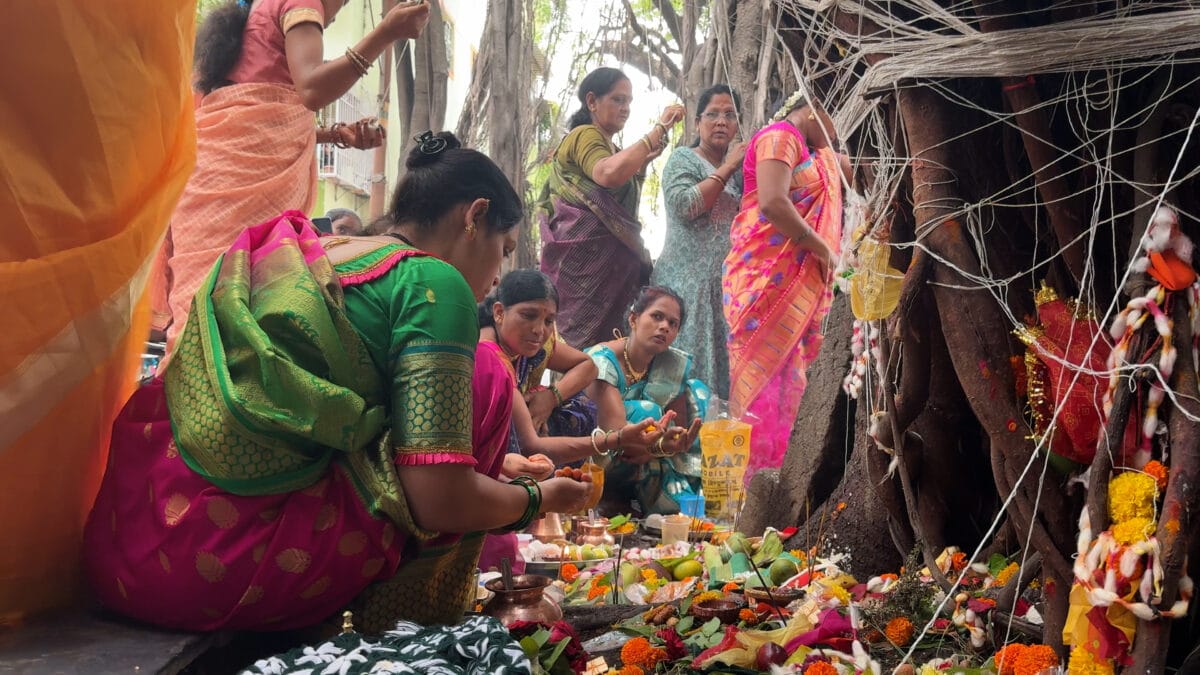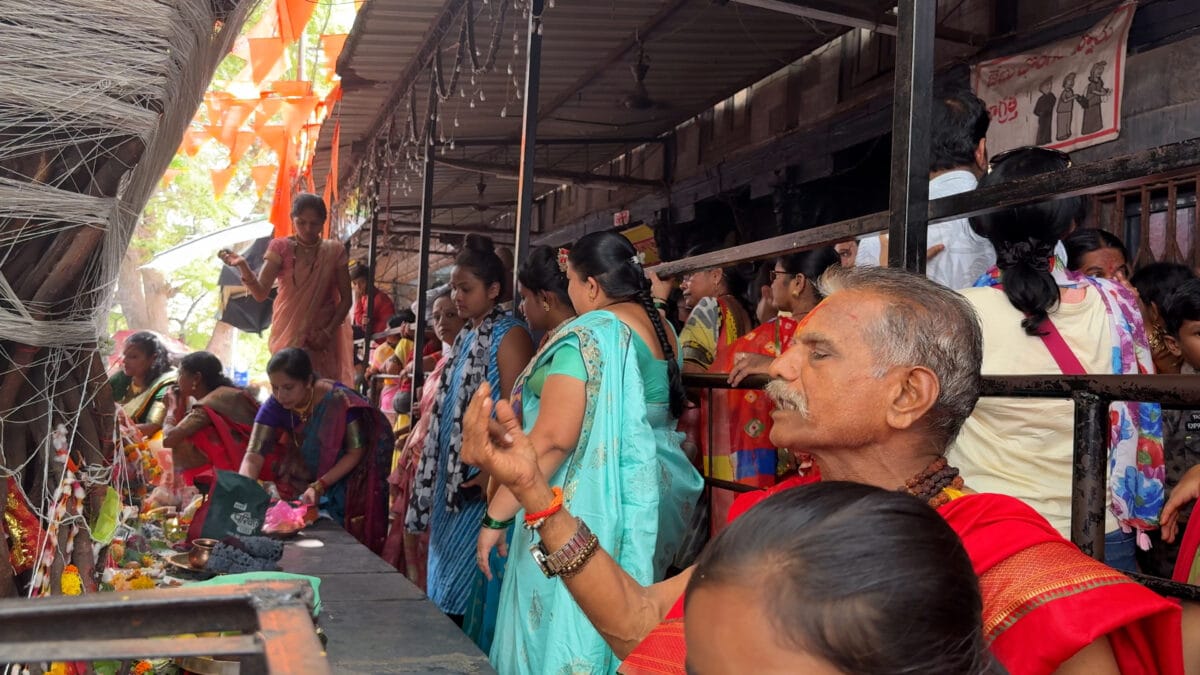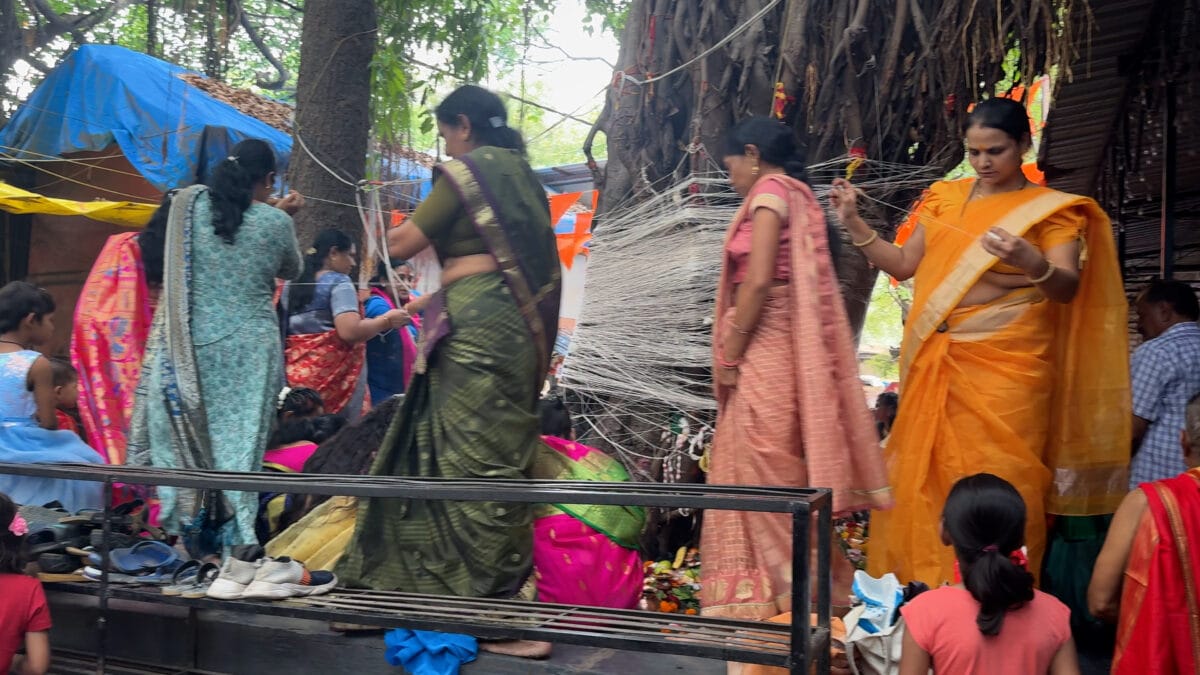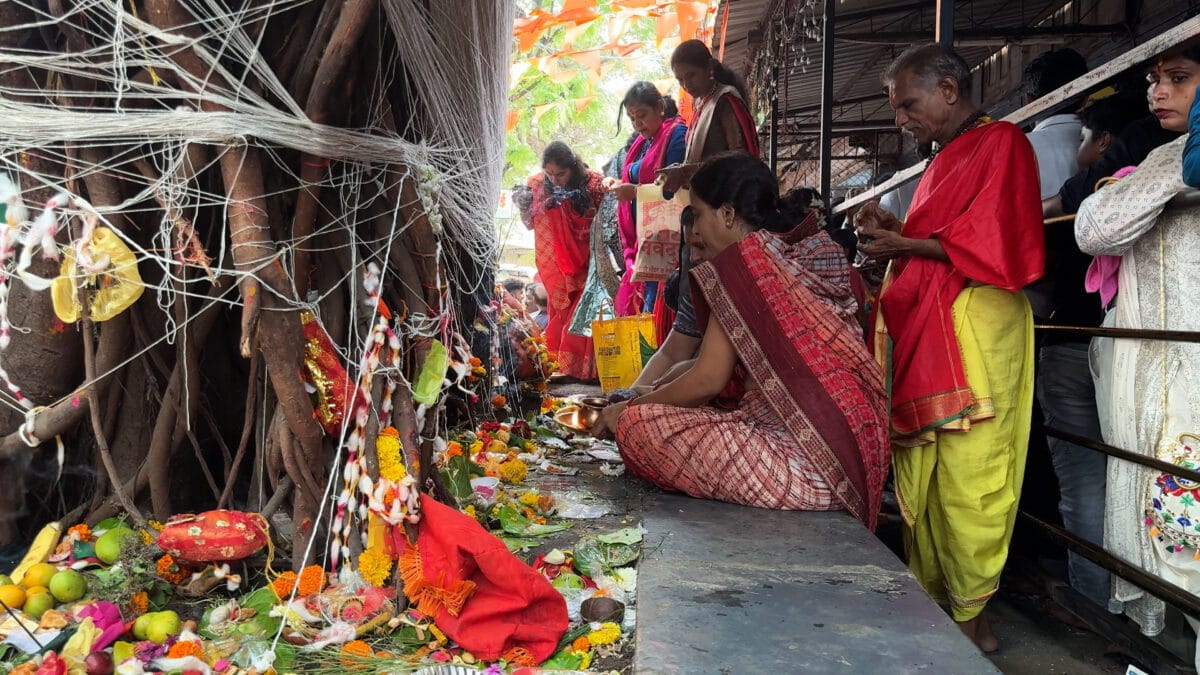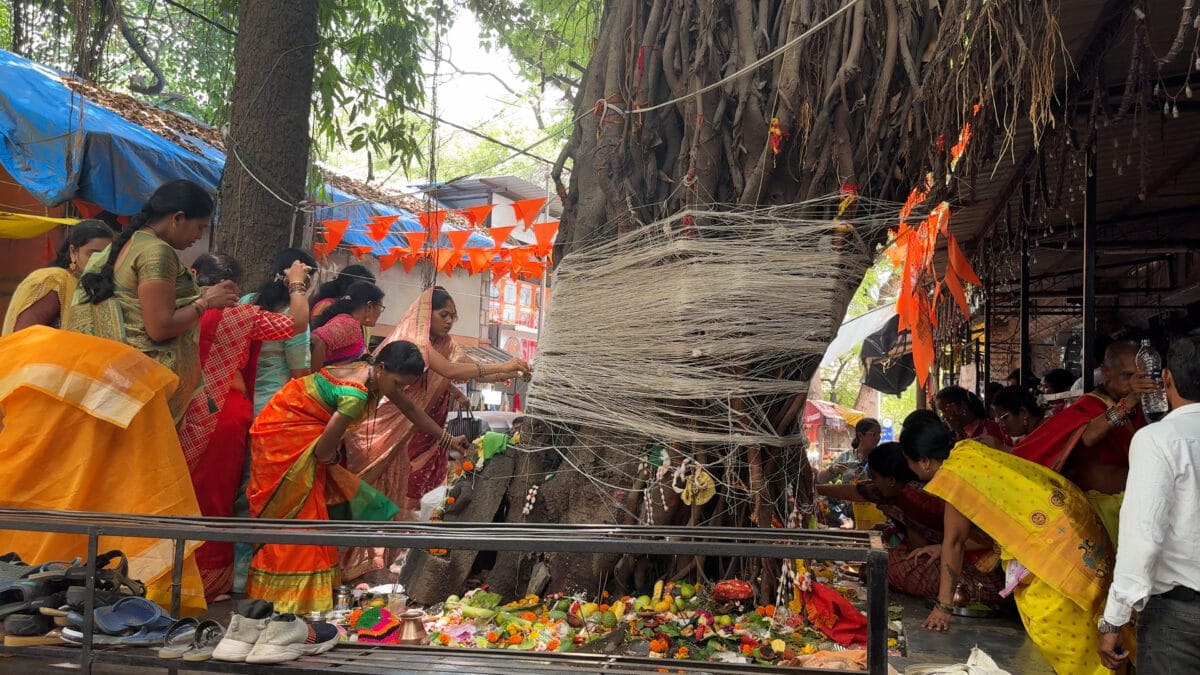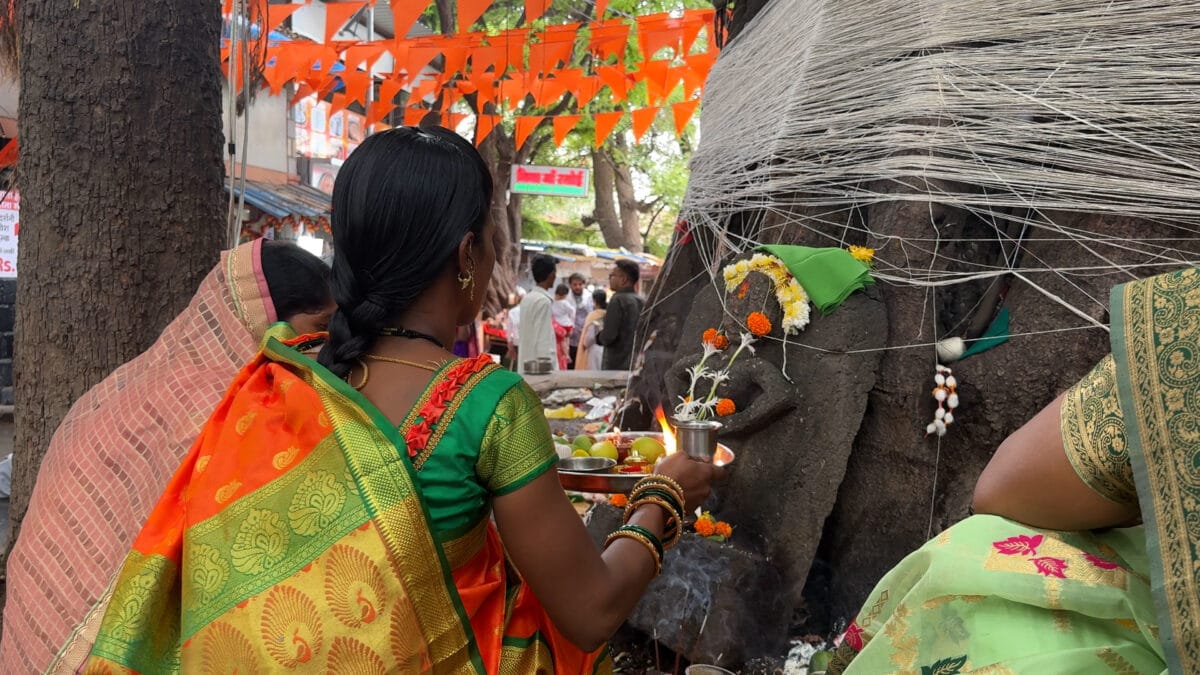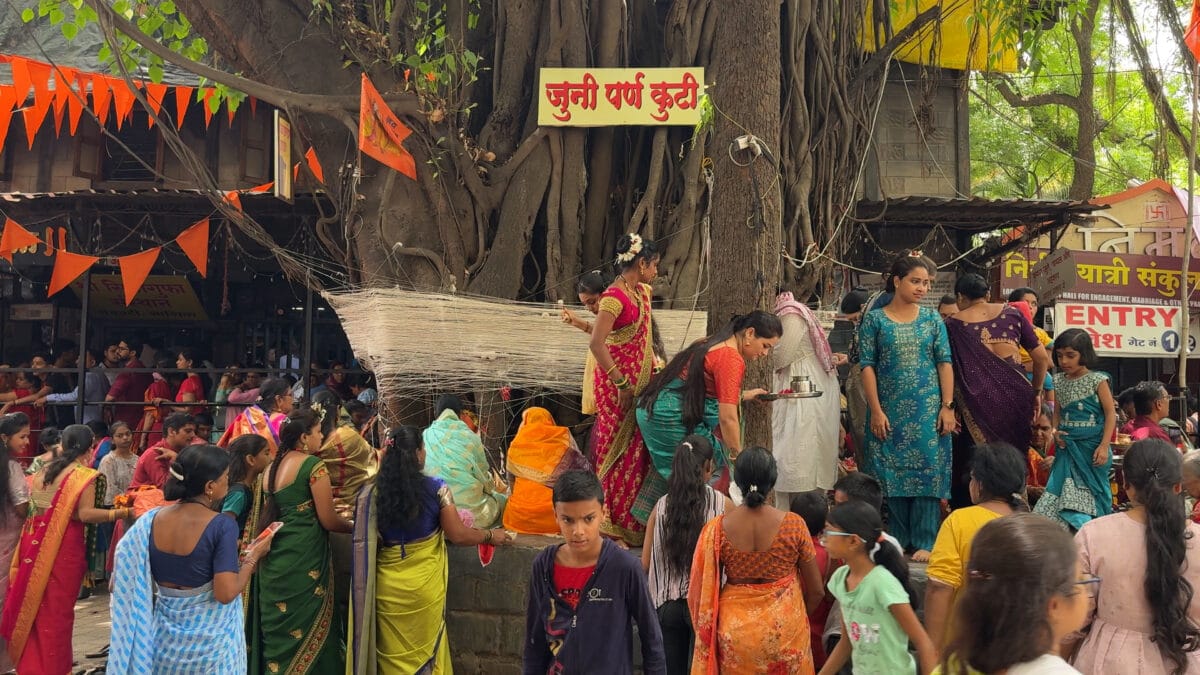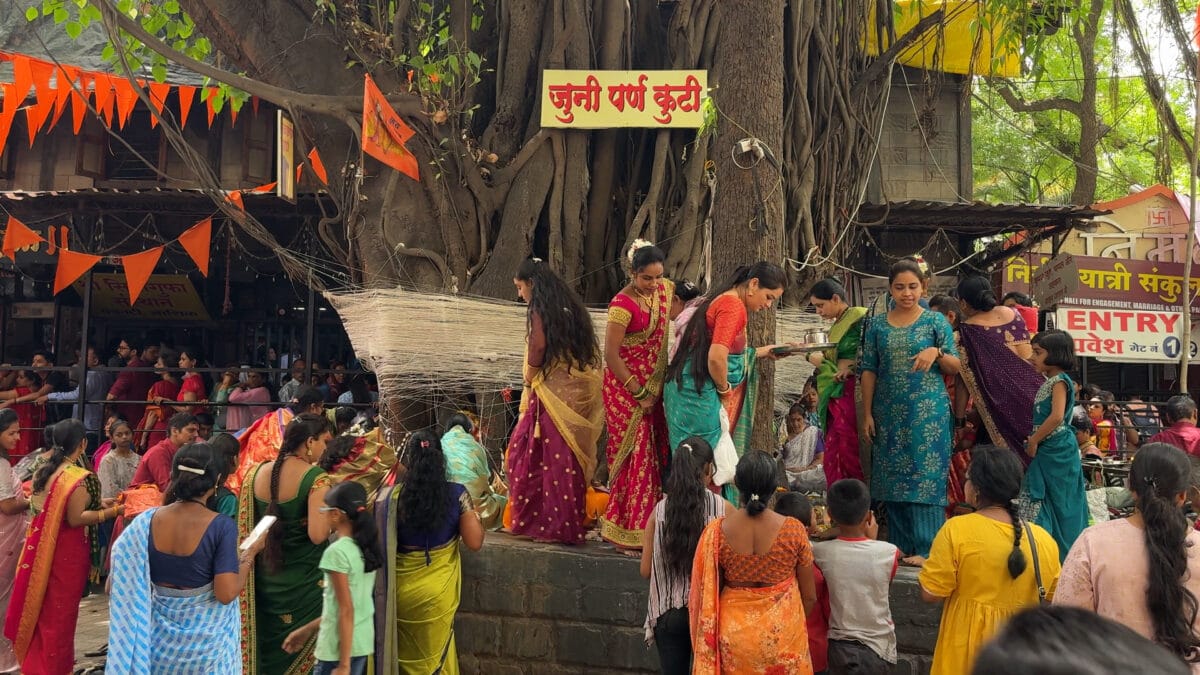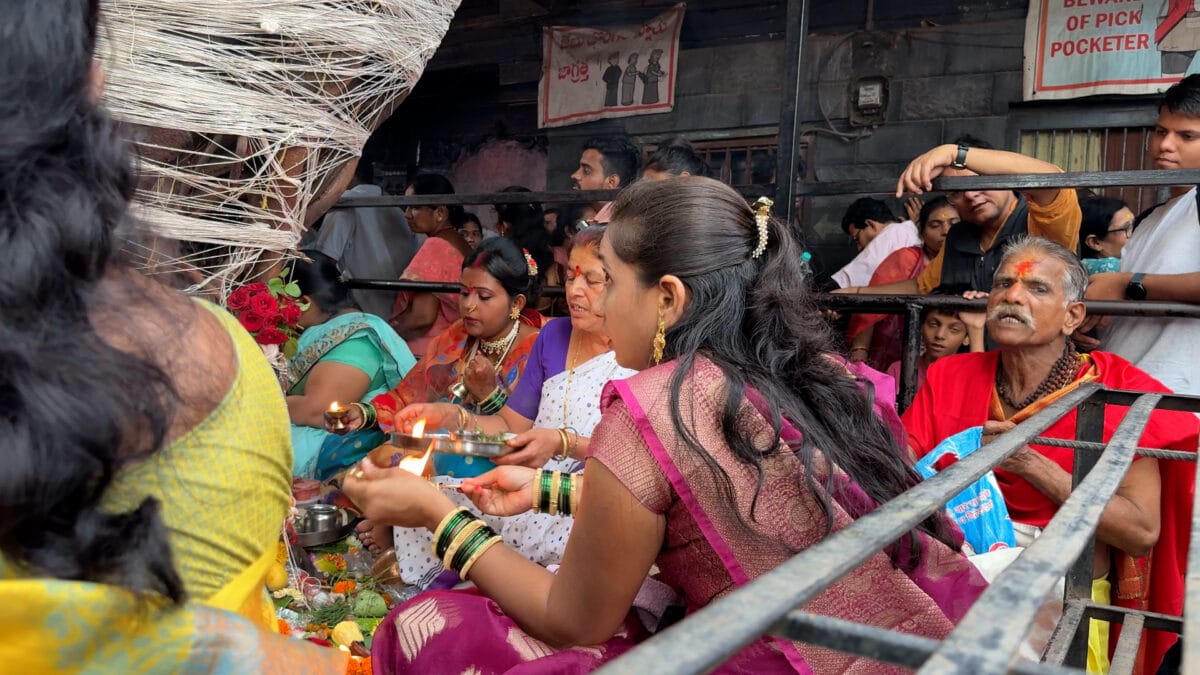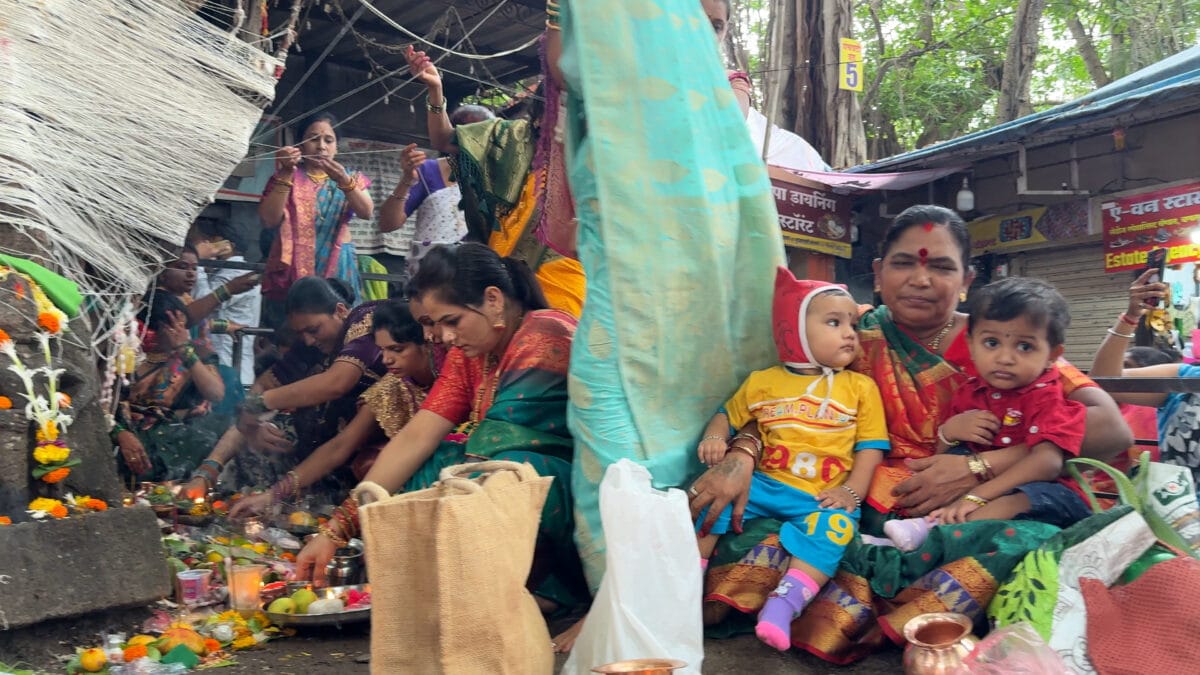Vat Purnima, also known as Vat Savitri Purnima and Vat Savitri Vrat, is a highly revered Hindu festival observed primarily by married women in Maharashtra, Goa, Gujarat, and South India.
This auspicious day celebrates the legendary devotion of Savitri towards her husband Satyavan and its association with the Vat Vriksha (sacred banyan tree) symbolizing longevity and marital bliss.
The same festival is celebrated in Punjab, Uttar Pradesh and other parts of North India under the name of Vat Savitri Amavasya and it falls on the Amavasya (no moon day) of Jyeshtha month which was on 26 May 2025.
In this article you will find everything you need to know about Vat Purnima 2025 – the date and time, puja vidhi (rituals), significance, muhurat (auspicious timings), and regional customs, especially in Maharashtra.
Vat Savitri Purnima Images Gallery
When is Vat Purnima in 2025?
Vat Purnima is celebrated on Purnima (the full moon day) in the Hindu month of Jyeshtha. In 2025, Vat Purnima falls on:
- Vat Purnima Date : 10 June 2025
- Vat Purnima Tithi starts : 11.35 am on 10 June 2025
- Vat Purnima Tithi ends : 1.13 pm on 11 June 2025
Shubh Muhurat
Although the pooja can be performed from early morning till afternoon, the Shubh Muhurat or the best time for performing the rituals is from 11:55 am till 12:51 pm on 10 June 2025.
The Significance of Vat Purnima
Vat Purnima honors the eternal love and devotion of Savitri, the devoted wife who saved her husband Satyavan from death through her determination and prayers.
According to legend, Savitri’s unwavering dedication impressed Yama, the God of Death, who granted her husband a second life.
The festival symbolizes marital fidelity and the strength of a devoted wife. It is believed that by observing this Vrat (fast) and performing rituals under the Banyan tree (Vat vriksha), married women can ensure the well-being, prosperity, and long life of their husbands.
The Vat Vriksha or banyan tree is sacred in Hindu culture, representing immortality and eternal life, and it was under the Vat Vriksha or banyan tree that Satyavan came back to life, making it a central element in Vat Purnima celebrations.
Vat Purnima Puja Vidhi (Rituals)
Preparation Before the Vrat
Women wake up early in the morning, take bath and perform pooja at home, dress up in their best sarees or traditional attire and wear Saubhagya Alankar or the ornaments that symbolise the married status of a woman.
These include the sindoor applied on the parting of hair on the head or the top of the forehead, bindi or tikli on the forehead between the eyebrows, Mangalsutra, bangles, jewellery, Jodwe (silver toe rings) and Painjan or silver anklets also known as payal.
They then undertake a fast till sunset and abstain from eating. While taking a light fruit meal is acceptable, some women undertake the Nirjala Vrat or not taking any kind of food and abstaining from water as well.
Articles required for the Vat Purnima Pooja
- Dhoop or incense sticks & matchsticks
- Diva or small lamps along with oil or ghee and Vaat (wicks)
- Flowers, Haar or Mala (flower garlands) and the pooja thali (plate)
- Five kinds of fruits with Mango being the most prominent
- Shringar ornaments of a married woman
- Bundle of cotton thread to tie around the banyan tree
Vat Savitri Vrat Puja Vidhi
- Worshipping the Vat Vriksha
Women visit a Banyan tree near their home or a temple. They collectively perform the rituals assisted by brahmin priests who chant the related mantras of the occasion. - Rituals
Rituals include making offerings and performing Aarti to the Vat Vriksha and circling and tying a cotton thread around it. - Offerings
Offerings of water, rice, flowers, betel leaves, and sweets are made to the tree while chanting prayers dedicated to Savitri and Satyavan. - Storytelling
The story of Savitri and Satyavan is narrated or read aloud, reinforcing the virtues of devotion and marital fidelity. - Giving of Vaan
Women give fruits and other offerings to each other, exchange good wishes, and apply haldi kumkum on each others’ foreheads. - Fasting
Most women observe a strict fast for the entire day, some taking only fruits and water, while others may fast until sunset. - Breaking the Fast
After sunset, the fast is broken with family prayers and a special meal at home with the whole family.
Vat Purnima Celebrations in Panchavati
Panchavati, being the cultural heartland of Nashik and also an ancient pilgrimage destination, observes the festival with great enthusiasm.
Women gather at the Sita Gufa temple which is located under the shadows of the five Vat Vrikshas (banyan trees) which gave this region the name Panchavati (Panch means five and Vati means garden) – a garden of five sacred banyan trees.
The day is marked by community gatherings, devotional songs, and recitation of the Vat Savitri Katha (the tale of Savitri and Satyavan).
Many also visit sacred rivers and holy places like Ramkund on the banks of the Godavari in Nashik and temples across the city, which holds special religious significance during Vat Purnima.
Vat Purnima Celebrations by Hindus Around the World
While Vat Purnima is deeply rooted in Indian soil, it holds equal emotional and spiritual significance for Hindus living abroad. In countries like the United States, Canada, the United Kingdom, Australia, and parts of Europe, married Hindu women continue to observe this sacred vrat with great devotion.
United States 🇺🇸 & Canada 🇨🇦
In cities with large Indian communities like New Jersey, Toronto, Houston, and Vancouver, Hindu temples organize special Vat Savitri pujas. Women dress in traditional sarees, carry pooja thalis, and often gather at nearby parks or temple courtyards where banyan trees (or symbolic alternatives) are present. Many temples also provide printed or digital vrat katha booklets, making it easy for new generations to stay connected.
United Kingdom 🇬🇧 & Europe 🇪🇺
In the UK, especially in areas like Leicester and London, Vat Purnima is celebrated in ISKCON temples or community halls. In parts of Europe where access to temples is limited, women perform the vrat at home or join online satsangs and pujas organized by Hindu cultural groups. Often, a banyan tree is substituted with a sacred plant or symbolic idolwrapped in thread.
Australia 🇦🇺
In cities like Sydney, Melbourne, and Brisbane, Hindu temples such as Shiva Vishnu temples or Sri Durga templesconduct Vat Purnima pujas on weekends to accommodate working women. Women gather in sarees, offer prayers, and perform the thread ritual around a tree within the temple premises. In some places, especially where banyan trees aren’t available, a Peepal or Tulsi plant is honored as symbolic of the Vat Vriksha.
Digital Celebrations 🌐
With growing use of technology, many NRIs also observe Vat Purnima by:
- Attending live-streamed pujas
- Reading the Savitri Satyavan katha via apps or PDFs
- Sharing images of their rituals in WhatsApp or Facebook groups
This shows how tradition adapts without losing its essence, even across oceans.
Why is Vat Purnima Important Today?
In contemporary times, Vat Purnima is not just a religious observance but also a celebration of marital harmony and the sacred bond between husband and wife.
It reminds couples of the virtues of commitment, patience, and love.
With increasing urbanization, festivals like Vat Purnima help preserve cultural values and strengthen family bonds.
FAQs
Q: Who should observe Vat Purnima vrat?
A: Traditionally, married Hindu women observe this Vrat for the long life and prosperity of their husbands.
Q: Can unmarried women observe Vat Purnima?
A: Yes, unmarried women may also observe the Vrat to seek a good husband and marital bliss in the future.
Q: What is the significance of the Banyan tree in Vat Purnima?
A: The Banyan tree symbolizes longevity and immortality and it was under a banyan tree that Satyavan had come back to life. Hence worshipping it during Vat Purnima is believed to bless married couples with a long and healthy married life.
- Champa Shashti at Khandoba Mandir Panchavati Nashik: Yelkot Yelkot Jai Malhar! - 29 November 2025
- Mohanlal Ji Premium Veg Thali & Banquet Nashik Review 2025 - 22 November 2025
- Margashirsha Month 2025: Mahalakshmi Guruvar Vrat Katha Pooja Dates & Significance - 21 November 2025
